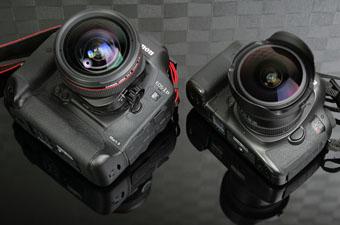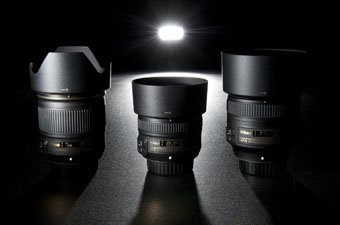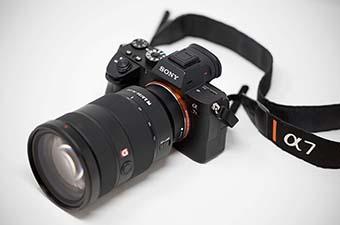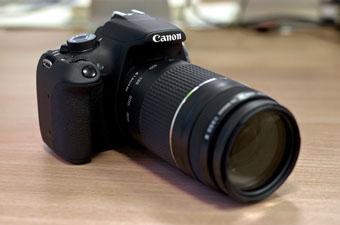Continuing its popular line of mirrorless cameras, in 2015 Olympus released the OM-D E-M5 Mark II. The Mark II is compact, weather resistant, and plays off many of the strong points of the OM-D E-M1 for a top-notch user experience. Compared to the original E-M5, you get a larger rear LED screen, improved video, faster burst rates and shutter speeds, and a beefed-up grip. The Mirco Four Thirds lens options for the Olympus OM-D E-M5 Mark II are immense, but below we’ve broken down our favorites from wide-angle to telephoto. You can opt for a versatile zoom lens that covers many of your everyday uses, and there are plenty of prime lenses to choose from as well.
Olympus OM-D E-M5 Mark II Kit Lenses
Olympus 12-40mm f/2.8 Pro ($1,898 for the kit)
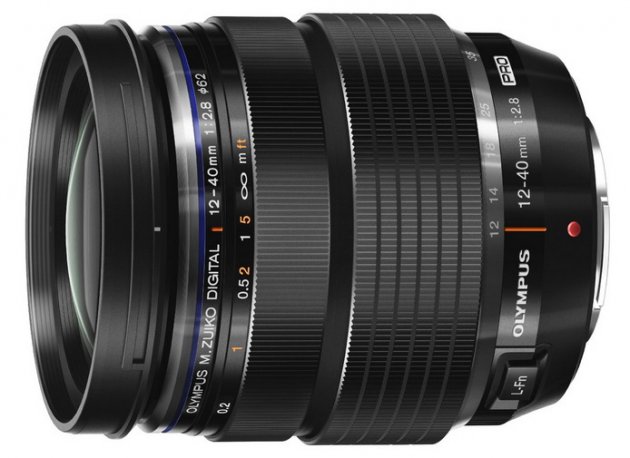 Weight: 13.5 oz.
Weight: 13.5 oz.
Max Aperture: f/2.8
What we like: Weather sealing and impressive low light performance for a zoom lens.
What we don't: The cost.
If you’re looking for the ultimate zoom lens to pair with the OM-D E-M5 Mark II, look no further than the Olympus 12-40mm f/2.8 Pro. This is an extremely impressive lens, featuring a maximum aperture of f/2.8 throughout its zoom range, metal construction, weather sealing, and a nifty manual focus ring. With a focal length equivalent of 24-80mm on a 35mm camera, it’s an ideal lens for everything from landscapes to travel and portraits. The only issue is the price, which brings the total cost of the system including the camera body to nearly $2,000.
See the Olympus 12-40mm Kit
Wide-Angle Lenses
Panasonic Lumix 7-14mm f/4.0 ($881)
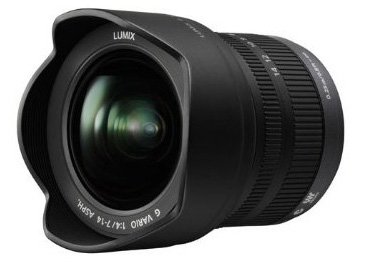 Weight: 10.6 oz.
Weight: 10.6 oz.
Max Aperture: f/4.0
What we like: Ultra-wide angle capability.
What we don't: Cost and low light performance.
For enthusiasts and professionals, the Panasonic Lumix 7-14mm f/4.0 is the top ultra-wide-angle zoom lens for Micro Four Thirds. This lens is more expensive and heavier than the competition, but discerning photographers will appreciate its sharpness, build, and outstanding image quality (we like the integrated hood feature too). For a prime wide-angle lens with better low light performance, the Olympus 12mm f/2.0 is sharp, fast, and has a sturdy all-metal construction, but we prefer the cheaper manual focus Rokinon 12mm below.
See the Panasonic 7-14mm
Rokinon 12mm f/2.0 ($309)
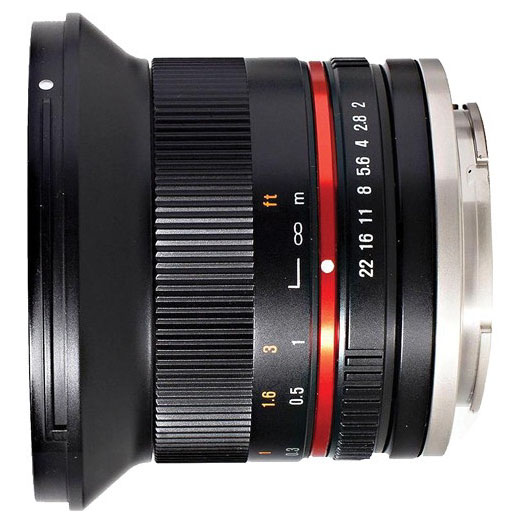 Weight: 9 oz.
Weight: 9 oz.
Max aperture: f/2.0
What we like: A great value in wide-angle lens.
What we don't: No autofocus.
Given the tough state of the wide-angle lens market for Micro Four Thirds, we decided to think outside the box and bring in the Rokinon 12mm f/2.0. This manual focus lens comes in variety of mounts and is very reasonably priced at just over $300. But perhaps most impressive is its maximum aperture of f/2.0, which is terrific for astrophotography and other low light photography. Manual focusing may be a hurdle for some photographers, but we love the sharpness and build quality of the Rokinon 12mm. For comparison, the Zeiss 12mm Touit for Sony and Fujifilm has similar optics and is more than double the cost.
See the Rokinon 12mm
Everyday and Portrait Lenses
Olympus 17mm f/2.8 ($249)
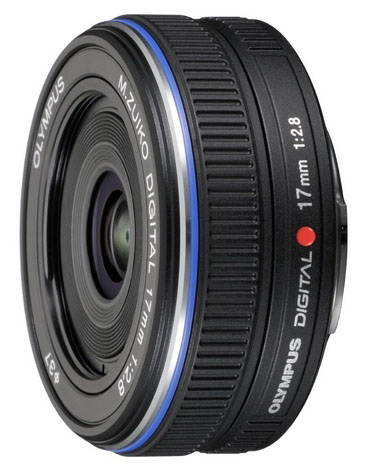 Weight: 2.5 oz.
Weight: 2.5 oz.
Max Aperture: f/2.8
What we like: Compact size and reasonable price.
What we don't: Focus can be slow.
If you shoot street or travel photography, give the Olympus 17mm f/2.8 a serious look. This super light and mostly plastic lens captures good images at a 35mm equivalent focal length on E-M5 Mark II. At only 2.5 ounces and with a very low pancake profile, you’ll barely even know the lens is on your camera or in your camera bag. For enthusiasts and professionals who frequently shoot at this focal length, the Olympus 17mm f/1.8 is faster, sharper and more expensive.
See the Olympus 17mm
Panasonic Lumix 20mm f/1.7 II ($428)
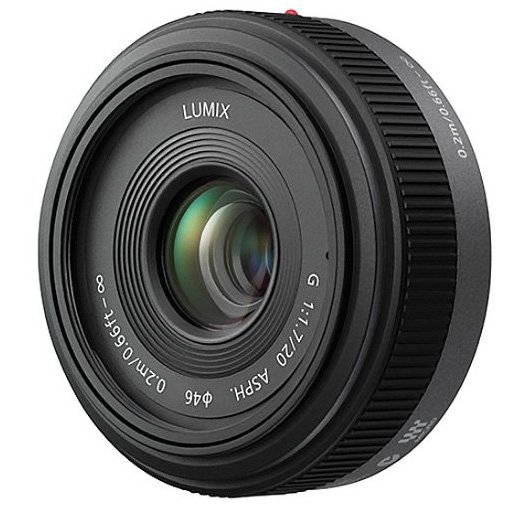 Weight: 3.5 oz.
Weight: 3.5 oz.
Max Aperture: f/1.7
What we like: Compact size, sharpness, low light performance.
What we don't: 40mm equivalent focal length.
The Panasonic Lumix 20mm f/1.7 II is one of the more popular Mirco Four Thirds lenses on the market (the original version had banding issues when shooting high ISO images and thus was replaced). This pancake-style lens is extremely light at only 3.5 ounces, and despite its compact size, boasts impressive sharpness, bokeh, and low light performance. Our only major concern is the 40mm equivalent focal length, which is slightly less wide than we prefer for street photography, but not quite close enough for most portraiture. But that’s being nitpicky for a good all-around pancake lens.
See the Panasonic 20mm
Panasonic Leica Summilux 25mm f/1.4 ($598)
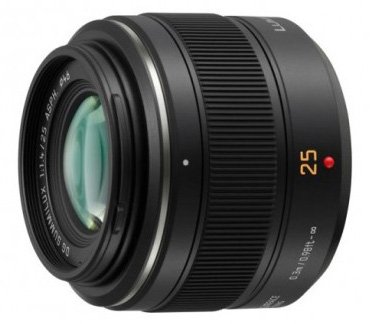 Weight: 7.1 oz.
Weight: 7.1 oz.
Max Aperture: f/1.4
What we like: Sharpness and low light performance.
What we don't: None.
Leica makes some of the finest lenses on the planet, and the Panasonic Leica Summilux 25mm f/1.4 is the premier portrait lens for the Olympus OM-D E-M5 Mark II. With a focal length equivalent of 50mm on a 35mm camera, this lens produces outstanding photos and video including the best low light performance on this list, fast and accurate autofocus, and excellent sharpness (even wide open). For just under $400 you can get the Olympus 25mm f/1.8, which is two-thirds of a stop slower but still a high performing lens.
See the Panasonic 25mm
Olympus 45mm f/1.8 ($349)
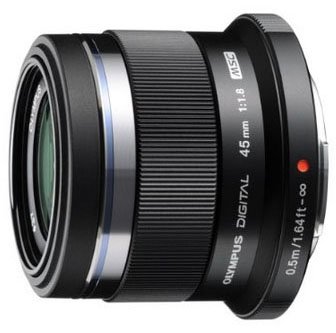 Weight: 4.3 oz.
Weight: 4.3 oz.
Max Aperture: f/1.8
What we like: Lightweight and fast.
What we don't: A specialty focal length.
For close-up portraits, look no further than the Olympus 45mm f/1.8. This lens is sharp, produces creamy bokeh, and vibrant colors. And with a maximum aperture of f/1.8, you’re getting professional-level low light performance at a reasonable price. However, one consideration when choosing this lens is the focal length equivalent of 90mm on a 35mm camera, which really is a distance used mostly for head shots. But for photographing kids and family, the 45mm f/1.8 is a great choice.
See the Olympus 45mm
Olympus 12-50mm f/3.5-6.3 ($499)
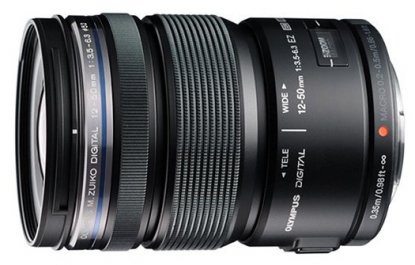 Weight: 7.5 oz.
Weight: 7.5 oz.
Max Aperture: f/3.5
What we like: Versatility.
What we don't: Low light performance.
If you don’t want to spend up for the Olympus 12-40mm f/2.8 above, try the Olympus 12-50mm f/3.5-6.3. This versatile everyday lens covers the majority of the most used focal lengths with an equivalent of 24-100mm (you’ll still need a telephoto zoom for a complete set-up). One weakness of the Olympus 12-50mm is its aperture range of f/3.5-6.3—those who frequently shoot in low light may prefer the f/2.8 Pro or the faster prime lenses. Otherwise, this is a nice budget zoom option for the Olympus OM-D E-M5 Mark II.
See the Olympus 12-50mm
Macro Lenses
Panasonic Leica 45mm f/2.8 ($898)
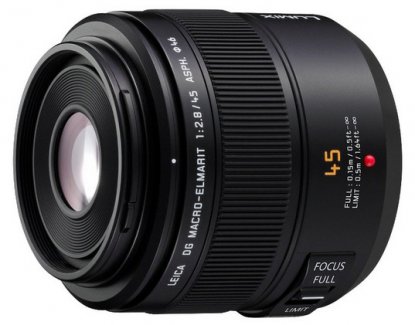 Weight: 7.9 oz.
Weight: 7.9 oz.
Max Aperture: f/2.8
What we like: Superb optical performance.
What we don't: Cost.
For macro photography and portraits, the Panasonic Leica 45mm f/2.8 captures exceptional images. The lens is extremely sharp, produces excellent bokeh, vibrant colors, and has image stabilization for hand held photos. Equivalent to 90mm on a 35mm camera, the 45mm f/2.8 also is relatively lightweight at just under 8 ounces. As with almost all Leica lenses, premium quality comes with a premium price tag, which is the biggest hurdle for most consumers in choosing this lens.
See the Panasonic 45mm
Olympus 60mm f/2.8 ($449)
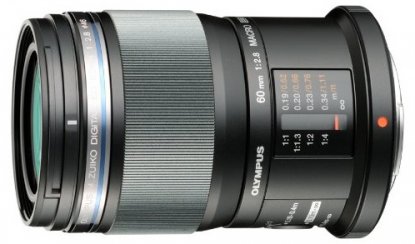 Weight: 6.5 oz.
Weight: 6.5 oz.
Max Aperture: f/2.8
What we like: Cost, weight.
What we don't: No image stabilization.
The Olympus 60mm f/2.8 offers similar optical quality to the Panasonic Leica 45mm f/2.8 above with a few shortcomings. One is its focal length of 60mm (equivalent to 120mm on a 35mm camera), which is a bit longer than some photographers prefer for macro photography. Others are its lack of image stabilization and mostly plastic construction (the lens does have a metal mount). But all things considered, we think the Olympus 60mm is a top-flight macro lens and a better value than the Panasonic Leica 45mm. It’s also weather sealed like the OM-D E-M1 Mark II (the Panasonic macro lens is not).
See the Olympus 60mm
Telephoto Zoom Lenses
Olympus 40-150mm f/4.0-5.6 ($119)
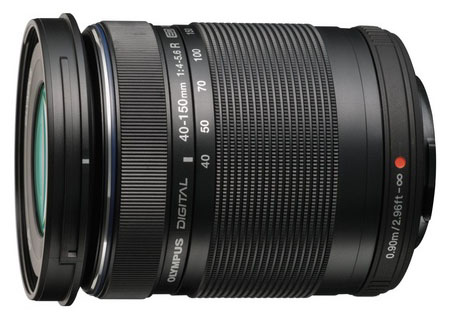 Weight: 18.3 oz.
Weight: 18.3 oz.
Max aperture: f/4.0
What we like: A great value and good optics.
What we don't: No image stabilization.
At only $119, the Olympus 14-150mm is perhaps the biggest steal on this list and an easy addition for many photographers. With an equivalent focal length of 80-300mm, the lens works well for travel, wildlife, and other telephoto photography. Why is it so cheap? The lack of image stabilization is the biggest reason, which certainly isn’t optimal for hand held photography when natural light is low. You can opt for the pricier Panasonic 45-200mm f/4.0-5.6, which has image stabilization and a longer reach at 400mm equivalent. The Panasonic 100-300mm below has image stabilization as well.
See the Olympus 40-150mm
Panasonic 100-300mm f/4.0-5.6 ($598)
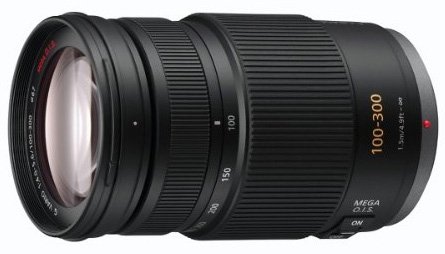 Weight: 18.3 oz.
Weight: 18.3 oz.
Max Aperture: f/4.0
What we like: Image stabilization.
What we don't: Low light performance, weight.
With an extra long focal length equivalent of 200-600mm on a 35mm camera, the Panasonic 100-300mm falls into the category of “super telephoto.” The lens has image stabilization, and with a maximum aperture of f/4.0, this is an important feature. Sharpness can be an issue at the long end, but overall the Panasonic 100-300mm is a quality zoom lens with an impressive range.
See the Pansonic 100-300mm
Olympus OM-D E-M5 Mark II Lens Comparison Table
| Lens | Price | Type | 35mm | Aperture | Weight |
|---|---|---|---|---|---|
| Olympus 12-40mm f/2.8 Pro | $899 | Kit | 24-80mm | f/2.8 | 13.5 oz. |
| Panasonic Lumix 7-14mm f/4.0 | $881 | Wide angle | 14-28mm | f/4.0 | 10.6 oz. |
| Rokinon 12mm f/2.0 | $309 | Wide angle | 24mm | f/2.0 | 9 oz. |
| Olympus 12-50mm f/3.5-6.3 | $499 | Everyday | 24-100mm | f/3.5-6.3 | 7.5 oz. |
| Olympus 17mm f/2.8 | $249 | Everyday | 34mm | f/2.8 | oz. |
| Panasonic Lumix 20mm f/1.7 II | $428 | Everyday | 40mm | f/1.7 | 3.5 oz. |
| Panasonic Leica Summilux 25mm f/1.4 | $598 | Portrait | 50mm | f/1.4 | 7.1 oz. |
| Olympus 45mm f/1.8 | $349 | Portrait | 90mm | f/1.8 | 4.3 oz. |
| Panasonic Leica 45mm f/2.8 | $898 | Macro | 90mm | f/2.8 | 7.9 oz. |
| Olympus 60mm f/2.8 | $299 | Macro | 120mm | f/2.8 | 6.5 oz. |
| Olympus 40-150mm f/4.0-5.6 | $119 | Telephoto | 80-300m | f/4.0-5.6 | 6.7 oz. |
| Panasonic 100-300mm f/4.0-5.6 | $598 | Telephoto | 100-300mm | f/4.0-5.6 | 18.3 oz. |
Why the 2x Focal Length Equivalent?
When choosing lenses for your Olympus OM-D E-M5 Mark II, make sure to keep the focal length equivalents in mind. For Micro Four Thirds cameras like the Mark II, you can multiply the listed focal length by 2 for the 35mm equivalent. This practice is common with all cameras that aren’t full-frame, with the multiplier varying by type. Nikon DX-format cameras are 1.5x, for example, and Canon APS-C cameras are 1.6x.
Why must we multiply the focal lengths? 35mm cameras are the standard, and the diagonal length of a Micro Four Thirds image sensor is 1/2 that of a 35mm camera. Because the angle of view of a lens is determined by an equation using its focal length and the diagonal length of the image sensor, we must multiply the focal length of Micro Four Thirds lenses by 2 to get the equivalent field of view of a 35mm. This is helpful in making a purchase and deciding which purposes a lens is best used for.
Micro Four Thirds Lens Compatibility
The good news for those who own Micro Four Thirds cameras like the Olympus OM-D E-M5 Mark II is that the lens options are immense. All Olympus and Panasonic Micro Four Thirds lenses are compatible with the Mark II and a number of third-party manufacturers (like Rokinon on this list) are making lenses for the mount as well. Compared to Sony’s E-mount or Fujifilm’s X-mount, there are many times more choices.
Choosing a Micro Four Thirds camera also is a nice play for the future. Olympus and Panasonic continue to grow in this space, and you’ll have plenty of camera options down the road from budget to professional. If you make the right lens choices and take care of them along the way, you can expect to have them for many years to come.

